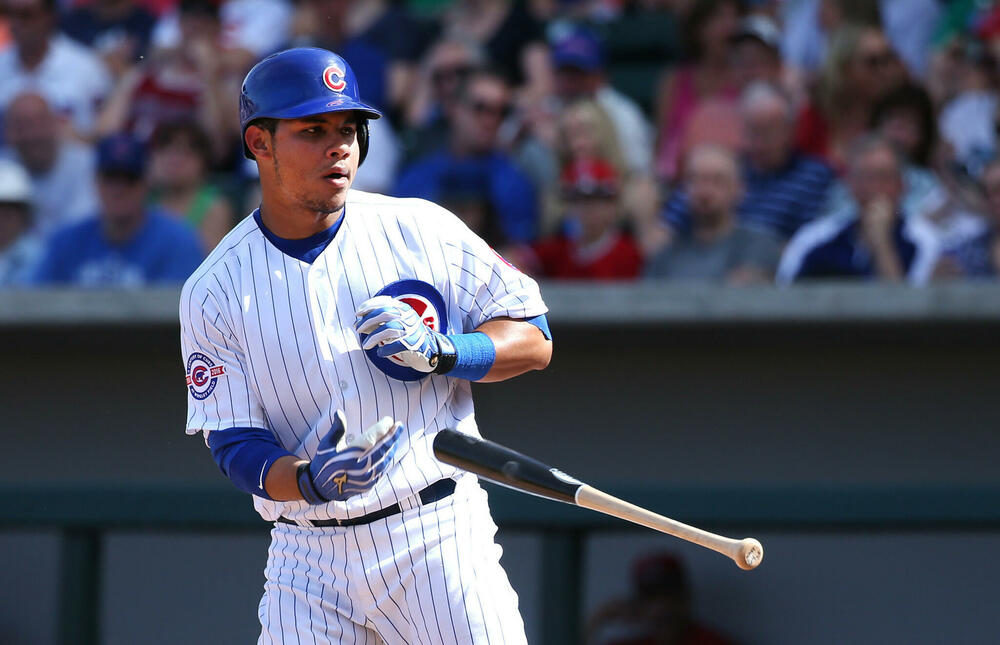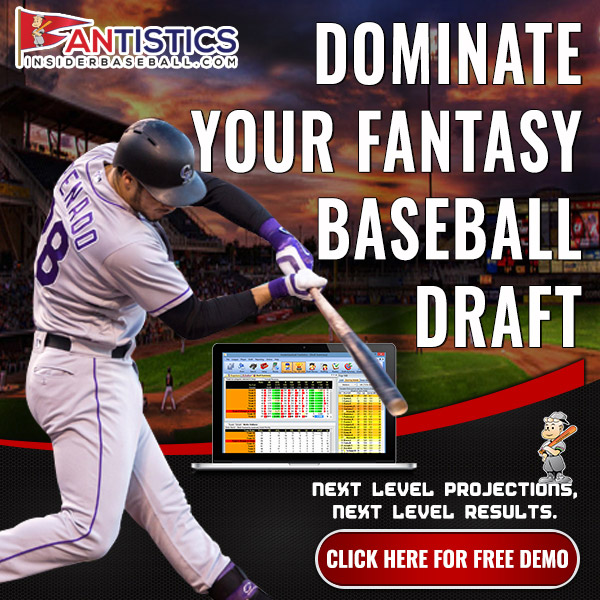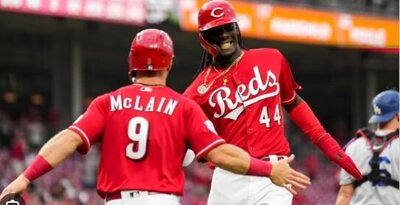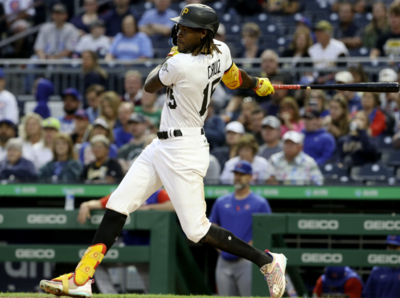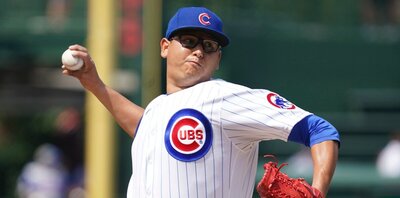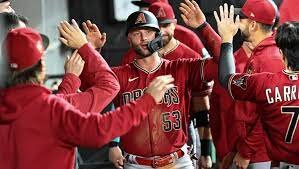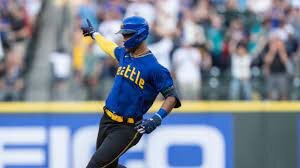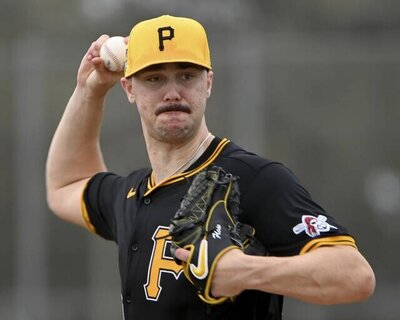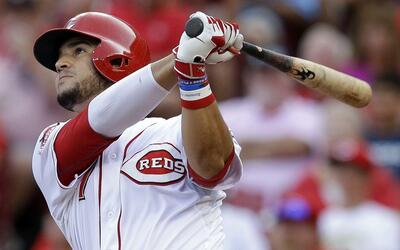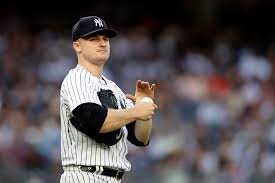Cubs:
Willson Contreras: 2019 bounceback candidate or 2017 abberation?
Who is the real Willson Contreras? Is it the 2017 version that managed to hit .276/.356/.499 with 21 homeruns in just 428 at-bats, or the 2018 version that hit .249/.339/.390 with 10 homeruns in 544 at-bats? After playing nearly everyday in the first half and posting a respectable .279/.369/.449, the wheels totally fell off in the second half when he slashed .200/.291/.294 with a correlating drop in hard hit rate from 31.7% to 23.9% between the two time periods. While a theory that he got worn down is valid, the fact remains that he is a catcher and all catchers wear down quicker and easier than other positions. Also consider that while his .344 BABIP in the second half was strong, it was likely inflated when you factor in that his hard hit rate of 31.9% was about 4% lower than the league average mark, meaning he was actually fortunate in the first half.
Willson Contreras ranks near the bottom in most pitch framing metrics per Statcorner with a -96 +calls total (number of oStrikes less zBalls, or in layman's terms - the number of pitches caught outside the strike zone that were called strikes less the number of pitches caught inside the strike zone that were called balls) and ranks as one of the worst catchers in the MLB with a -12.8 runs above average (RAA) rating. To put this in perspective, the Brewers' new catcher, Yasmani Grandal, posted a +104 in +Calls and a 13.8 in RAA in 2018. Why do fantasy players care about defensive stats? The answer is that we shouldn't have to until the teams do. In other words, Willson Contreras was reportedly on the trade block for the Cubs during the 2018 off-season, which indicates the club is possibly concerned about something. Considering his demeanor behind the plate and his distracting and restless tactics, it's possible the Cubs' pitching staff is getting frustrated having to have Contreras call their games. A team is willing to put up with poor defense when the player is producing offensively, but if he's not getting it done at the dish, there's very little reason for the team to stick with a poor game manager behind the plate.
The upcoming season will be a pivotal year when determining Willson Contreras' future with Chicago. That also means it'll be a pivotal year as it relates to his fantasy value. What happens if the Cubs find a taker mid-season - will he still lead the MLB in innings caught like he did in 2018? The question ultimately comes down to how comfortable you are with betting on a bounceback season from a player with defensive concerns who also saw massive declines across most of his indicator metrics in 2018 - will you be willing to take on that risk in the 8th round? Can you justify his huge range of outcomes before taking your 3rd starting pitcher or 1st closer? These are the decisions you need to think about now, not when you have 30 seconds left on your pick clock in the draft.
Taking a Closer Look at Kyle Hendricks
By most metrics, Kyle Hendricks has been nothing more than a rich man's Doug Fister since his fortunate 2016 season that resulted in the 8th lowest ERA in a single season among all active starting pitchers. He lives by getting ahead in the count and inducing soft contact, usually on the ground. That recipe typically doesn't result in a lot of strikeouts and it has shown - back-to-back season with a strikeout rate at or below the league average. Hendricks technically has a three-pitch repertoire, but he primarily has used his sinker and changeup combination to keep hitters off-balance, while mixing in his curveball just 7.5% of the time.
This spring, however, he has reportedly been making it a "point of emphasis" to use his curveball more often per MLB.com's Jordan Bastian. That's an interesting development because the curveball was an extremely effective pitch for him last season per Brooks Baseball. While his sinker generally induces groundballs about 53% of the time, his curveball managed to do it in 63% of the time. Similarly, while the change-up has always been Hendricks' out pitch, his curveball had a respectable 25% whiff rate in 2018. If Hendricks is able to develop his curveball and add it as a trusted pitch in his repertoire for 2019, there's suddenly a good reason to be excited about his ability to add to his strikeout ability for the upcoming year.
It's only been 7.1 innings, but so far in the Spring, Hendricks has managed to strike out 9 batters, which is good for an 28% strikeout rate. It's a small sample against a lot of non-major league players, so don't read too much into it, but simply file it away in the back of your mind for draft day. His 125 ADP remains challenging to see much profit potential from, but if you miss the wave of elite starters and you're forced into the next tier of arms that provide a little more uncertainty, Hendricks offers a certain level of safety.
Royals:
Ryan O'Hearn You Wanted To Draft Me?
One of the trendy names in fantasy drafts heading into the spring was Ryan O'Hearn. Blame it on the scarcity of first base and maybe a little on his strong finish to 2018 during a cup of coffee, but O'Hearn was being drafted as a late round flier in most leagues. Fast forward to March and O'Hearn has seen his ADP fall from an average of 364 all the way down to 484. Why? In general, it's probably because people (rightfully) took a closer look at his minor league history and his numbers. O'Hearn spent 5 seasons in the minor leagues and never approach the HR/FB rate or batting average that he displayed in his time with the Royals in 2018. He's hitting well this spring, .296/.406/.333 in 27 at-bats, albeit for almost no power, although the 5:8 batting EYE is encouraging. Unfortunately, O'Hearn will be found with other similar types of bats while seeking for corner infield help late, but don't expect him to produce at the same rates for his first full-season as a major-leaguer as he did in the second half.
Jorge Lopez - Diving Deep for $1 AL-Only Starters
AL-only leagues are ugly this season, particularly because the depth of offense is very thin. This will natural lend rosters towards a "stars-and-scrubs" approach, particularly in auction formats where the elite hitters will be pushed up, leaving less money in the economy for the later rounds. Jorge Lopez is making a case this spring to be in consideration for a late-round $1 option in fantasy leagues. Lopez has been impressive this spring, highlighted by a 4.1 inning outing where he allowed 2 runs (1 earned) with 5 hits allowed (no walks) and 5 strikeouts. Lopez has a pretty easy path to a rotation spot in Kansas City and while the strikeout numbers lagged last season (16.2% strikeout rate), his rates in the minors suggest there remains some upside. He's likely not relevant in most mixed leagues, but he's definitely a late target in AL-only formats.
Padres
Matt Strahm - Meet the ace of the San Diego Padres?
Matt Strahm has always had the talent, but injuries have plagued his opportunity to contribute at the major league level each of the last two seasons. This year, Strahm is finally healthy and has the opportunity to break camp as a member of the Padres' rotation. In 118 career innings as a major leaguer, Strahm has managed a solid 11.8% swinging strike rate, 73% contact rate and 28% strikeout rate. Control has been an issue as evidenced by his 11% walk rate, but he has a nice 4-pitch repertoire that had each pitch as positive values last season - a rarity to see in a young starting pitcher. Durability and an innings cap will be a concern, but as a late round target, 100 quality innings can offer an enticing return.
Francisco Mejia - Post-hype sleeper alert:
Rewind one season and the hype was building around former Indians prospect Francisco Mejia. Mejia never really had a real chance at making the Indians roster last season, both because the team possessed a plethora of depth and the team didn't have confidence in his defense, but after being traded to San Diego mid-season in the Brad Hand trade, Mejia was up in September and managed to hit 3 home runs in 11 games started. The defense is a real concern, as is his ability to handle a young and inexperienced pitching staff, so even in most realistic scenarios he will still split time with Austin Hedges. Nonetheless, in an environment where offensive catchers are rare to find, Mejia may be able to offer a similar level of production in a limited number of games as a defense-first catcher who starts all games. The power is real and he hit for average in the minor leagues, but he'll need to improve his plate approach if he hopes to steal at-bats from Barnes. He's off to a hot start this spring, swatting 3 home runs and 9 RBIs with a solid .385/.429/.846 slash line, but he still has just a 2:7 batting EYE. At his ADP of 253 in the NFBC, he certainly offers more upside than others near him like Willians Astudillo (250) or Omar Navaez (300).
Around The League:
Shelby Miller (TEX) - Shelby Miller made his third start of spring training on Monday, going 2 and 2/3 innings pitched while allowing 2 hits, a walk and an earned run while striking out 3. It has now been 22 months since Miller underwent Tommy John surgery and while he did made 5 starts for the Diamondbacks last season, those starts came 13-14 months after the surgery and in general, it takes at least 18 months for pitchers to regain their entire skillset. Miller should open in the Diamondbacks rotation, one of two players attempting a return from Tommy John, and while he's probably not mixed league relevant right now, he could relevant after a handful of starts if he can prove he can pitch at a high level again.
Anthony DeSclafani (CIN) - Anthony DeSclafani started against the Indians on Monday and put together another nice outing, allowing just one earned run while pitching into the 4th inning. He only struck out two, but he gave up just 4 hits and one walk. DeSclafani was very unlucky last season when he posted a 4.93 ERA. His xFIP of 3.86, his 19.8% HR/FB rate and his 70.5% strand rate all suggest that he's due for positive regression as those indicators are all artificially negative. Pitching in Great American Ballpark will work against his HR/FB rate falling all the way down to league average, but with a strike out rate at the league average, it's reasonable to expect his LOB% to also move closer to league average of 73%. As the HR/FB pulls back and the LOB% ticks up, we'll naturally see his ERA swng back closer to his xFIP. He's a great late round starting pitching option this season.
Kyle Seager (SEA) - Kyle Seager is set to undergo surgery on an injured ligament on his wrist and will be out until at least May. Wrist injuries are always a concern for hitters and Seager now becomes a very risky pick in most mixed leagues after a down 2018 season. Replacing Seager in the Mariners lineup at third base will be Ryon Healy, while a combination of Edwin Encarnacion/JayBruce/Dan Vogelbach most likely will handle first base. Seager has hit 20 or more homerun for 7 straight seasons, but his contact rate has steadily moved from elite to below average over the course of the last 5 years, resulting in a poor .221 batting average last season. At 31, Seager is already showing the tell-tale signs of age-related regression with an increase in chase rate and swinging-strike rate, and while his hard hit rate remained slightly above league average last year, there's little reason to expect much improvement to his 11% HR/FB rate this season. Missing a month of action will make it very hard for him to keep his streak of 20-homerun seasons alive.
Dan Vogelbach (SEA) - The injury to Kyle Seager nearly guarantees Dan Vogelbach a spot on the major league roster to begin the season. A few days ago Mariners GM Jerry DiPoto alluded to this fact during a radio interview on 710 ESPN Seattle by saying, "Daniel Vogelbach will be on our roster when we break camp and we are going to commit to finding out if he can transition to the big leagues... He's got a great idea what he wants to do at the plate, he knows his skill-set. Vogey may have a better understanding of who he is as a hitter than 90 percent of the guys that are in the big leagues." The vote of confidence is exciting, but even with the Seager injury, Vogelbach may still have difficulty finding at-bats with Edwin Encarnacion and Jay Bruce each capable of playing first base while Ryon Healy moves to third in Seager's absence. Vogelbach posted a solid 0.50 EYE last season for the Mariners while posting an incredible 52.5% hard hit rate. Vogelbach is big guy and isn't mobile, which makes his defense at first base questionable, so DH will be the most likely path to the lineup. Still, he's out of options this spring and is too good of a hitter for the offense-need Mariners to keep out of their lineup on a consistent basis. He's worth a flier as corner infield depth late in your draft. What do you have to lose? You can always cut him once Seager comes back.
Corey Kluber (CLE) - Making his first start of the spring, Corey Kluber was welcomed by a Cincinnatti Reds club that managed 6 hits off the right-hander, including a home run and a double, while he also gave up a walk and struck out 4 over 3.2 innings. Kluber ended up allowing 3 earned runs and a walk. It wasn't a great start, but it's important not to read too much into the outing. Kluber's ADP in the first round of 2018 was a bit of an overreaction based on his underlying indicators, but this year he's much more fairly valued around 24 overall. He remains a safer bet than teammates Trevor Bauer or Carlos Carrasco, albeit without as much upside. Kluber' s underlying metrics in 2018 ended eerily similar to those he posted in 2016 with his SwStr% around 12%, strikeout rate near 26%, walk rate near 4%, contact rate between 74-75%, chase rate between 34%-35% and groundball rate at 45%. A mid season trade to a contender (if the Indians themselves aren't contending) would further boost his value.
Adam Jones (AZ) - Adam Jones finalized a deal with Arizona on Sunday to play centerfield for the Diamondbacks. Jones saw his streak of seven straight seasons with 20 or more homeruns break in 2018, but that decline was seemingly bad luck, as evidenced by his 8% HR/FB rate. Prior to last season, he HR/FB rate hovered between 14%-20% each year dating back to 2011 and while he did turn 33 in the middle of 2018, his hard hit rate remained at 31%, which is spot on his career levels. Jones does move from a favorable ballpark in Baltimore to a humidor-altered pitching park at Chase Field, so some park-related regression can be expected. Look for Jones to bounce back with a slightly better lineup around him, but don't pay for much more than 20 HRs and his career slash of .278/.318/456.
Ketel Marte (AZ) - The Adam Jones signing most directly impacts Ketal Marte's path to playing time as he moves from being the primary center fielder to a super utility player. That's the general assumption, but as beat writer Steve Gilbert of MLB.com speculates, it could actually be Jones that moves around to eat outfield spot. Marte has all the raw tools to take a step forward in 2019, but at it stands, he doesn't necessarily have a concrete role. Marte saw a massive improvement to his batting EYE since joining Arizona and he say his hard hit rate rise from 28% in 2017 to 36% last season. He still hits too many ground balls to be a a consistent power threat. For now, it's going to take an injury to Adam Jones, Nick Ahmed, Eduardo Escobar or Wilmer Flores for Marte to be guaranteed at-bats, but that group (along with Steven Souza Jr) is rather injury-prone, so Marte remains a nice pickup in the later rounds.
Christian Stewart (DET) - The Tigers' 25-year old power prospect, Christian Stewart, has a good opportunity to break camp as a starting outfielder for Detroit and has the bat to hit in the middle of the batting order. Stewart's most attractive quality isn't his power potential (although that's nice), it's actually his advanced plate approach which resulted in 0.77 batting EYE and a beautiful hit distribution in a cup of coffee last year with 31% pull, 31% center and 38% opposite rates. He's a mature hitter than will have a great opportunity for the upcoming season and is probably going grossly under drafted based on his projected batting order position.
Mike Moustakas (MIL) - Brewers manager Craig Counsell officially announced that Mike Moustakas will be the club's regular starting second baseman this season. It's big news for fantasy owners because Moose will eventually gain 2B and MI eligibility along with 3B and CI eligibility, which provides a huge boost to his attractiveness thanks to the versatility he allows. Moustakas will benefit from a full season in Miller Park and should be able to bounce back in the home run category as his 12.8% HR/FB rate regresses closer to his 2017 and 2018 levels in the upper-teens. Moose saw his hard hit rate sky-rocket from 31% to 41% in 2018 and continues to be a heavy flyball hitter. That means his batting average won't necessarily rise as much as it should give his hard hit rate, but it also hints towards a huge power output. Having a threat for 40 home runs at second base is a massive advantage and his ADP at 145 puts him about 50 spots after teammate Travis Shaw (with similar production), after Rougned Odor and near Cesar Hernandez. Moose is a great value.
Alex Reyes (STL) - Derrick Gould of the St. Louis Dispatch wrote on Sunday that the Cardinals plan to use Alex Reyes exclusively in one-inning appearances this spring. While this isn't exactly breaking news, it does squash any hope that Reyes might claim a rotation spot in Carlos Martinez's absence. For those holding shares on Alex Reyes in dynasty leagues, this should actually be viewed as positive news as the club attempts to take it slow with their top prospect. The shine may be getting tarnished slightly, but it shouldn't. Reyes remains one of the best pitching prospects in all of baseball and he will impact the major league club some way this year, it just might be out of the bullpen. Unfortunately, in redraft leagues, is ADP in the 13th round is far too early without a defined role in a standard 5x5 relevant position.

